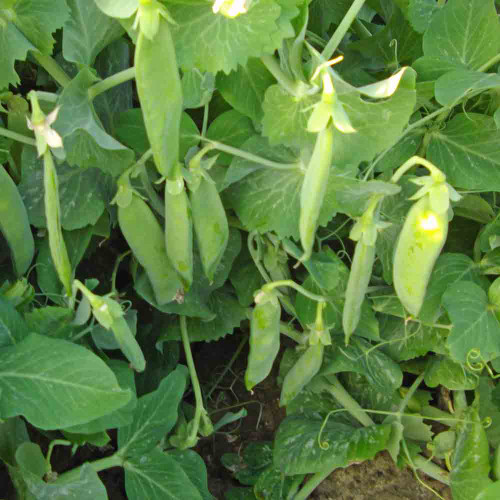Description
Mammoth Melting Sugar Pea - Sweetness From the Vine
"Melting sugar" really does describe this beautiful edible mammoth snow pea. Large, sweet and tender, this delicious snow pea has held a place in home gardens for many years. Large pods grow 4-5" long on 5' tall wilt resistant vines and bear heavily all season.
A gorgeous plant, the lovely white sweet pea flowers with trailing vines make it both an edible vegetable and a beautiful landscape plant. Crop production is often so successful that it has been used as a commercial variety for generations.
History
Heirloom peas or garden peas originated in middle Asia, from northwest India through Afghanistan and adjacent areas. A second area of development lies in the Near East, and a third includes the plateau and mountains of Ethiopia.
Heirloom peas were one of the most widely grown vegetables of northern Europe during the Middle ages, as their description and cultivation was evident in almost every early gardening or agricultural book of any language in middle and northern Europe.
Uses
Green peas are used fresh, cooked, frozen or canned. Dry peas are cooked whole or split.
Growing Tip
The most important thing to know about growing peas is that they cannot stand hot weather. If you live in a warm climate, fall and even winter planting can be fine. Some southern gardeners sow in fall and let the seeds lie dormant in winter so that they can sprout as early as possible in the spring in order to beat the heat. Remember peas can be planted in early spring and be one of your first crops producing.
Learn More
From the soil to the seed to the food you eat - we'll help you grow your best garden!
2 Reviews
-
Family Favorite
I have grown this variety for about 2 years now and it is a family favorite. They produce a large amount of peas that we shell and use generously in our casseroles.
-
Outstanding!
My neighbor planted some of these and they are gorgeous! Plus they are very sweet and delicious. I was so impressed that he gave me the empty packet so I could order some for our garden. A definite winner!















